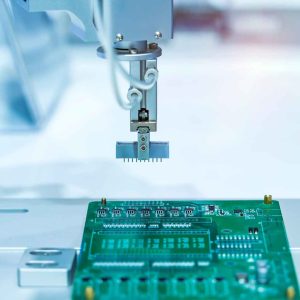In the rapidly evolving world of electronics, innovation is a double-edged sword. The same relentless pace that brings us faster, more powerful, and more efficient components every year also creates a critical and often-overlooked business risk: component obsolescence. A product designed to have a service life of ten years can be brought to its knees in just two, not because it failed, but because a single, critical microcontroller, memory chip, or power regulator is suddenly declared “End-of-Life” (EOL) by its manufacturer. This event can halt a production line, threaten the support of fielded products, and force a company into a costly crisis. The scramble to find a solution is a nightmare for any product manager or engineer. Fortunately, this crisis is almost entirely preventable. The solution is a proactive, disciplined process known as Component Lifecycle Management (CLM), a strategy that is most effective when executed in close partnership with an experienced Contract Electronics Manufacturer (CEM). At BENCOR, we view this service not as an add-on, but as a fundamental part of our commitment to building sustainable, long-lasting products for our American partners.
The "Obsolescence" Nightmare: A Costly and Disruptive Threat
To understand the value of CLM, one must first appreciate the chaos it prevents. Imagine your product is in full production and selling well. Suddenly, you receive a Product Change Notification (PCN) from a supplier: a key processor, for which there is no direct replacement, is being discontinued. Your company now faces a cascade of increasingly terrible options.
The Mad Scramble: “Last-Time Buys” (LTB)
The manufacturer of the EOL part will typically offer a “Last-Time Buy,” giving you one final chance to purchase a large quantity. This forces a high-stakes guessing game. How many will you need for the remaining life of your product? Buy too few, and you’re back to the same crisis in a year. Buy too many, and you tie up hundreds of thousands of dollars in capital, all sitting on a shelf as depreciating inventory. This is a massive financial and logistical gamble.
The Perils of the “Grey Market”
If the LTB window is missed, or the inventory runs out, the desperation truly begins. This often means turning to unauthorized, non-franchised distributors—the so-called “grey market.” This path is fraught with extreme risk. You are exposed to:
- Counterfeit Components: Parts that are expertly remarked to look like the one you need but are functionally duds or low-quality imitations.
- Damaged or Used Parts: Components that have been improperly harvested from e-waste, stored incorrectly (exposing them to moisture and ESD damage), or are simply used and near the end of their operational life.
- No Traceability: You have no guarantee of the component’s origin, how it was handled, or if it’s even genuine. Installing a grey market component in a high-reliability product is like a ticking time bomb.
The Ultimate Cost: A Forced Redesign
The only “safe” alternative, and the most expensive one, is a complete and immediate product redesign. This is a logistical and engineering catastrophe. It means pulling valuable engineers off new, innovative projects and forcing them onto a reactive “fire drill.” It requires a new PCB layout to accommodate a different component, new prototyping runs, new validation and testing, and potentially new regulatory certifications. All the while, your production line is stopped, your competitors are gaining ground, and your customers are left waiting.

What is Component Lifecycle Management (CLM)? A Proactive Defense
Component Lifecycle Management is the strategic process of avoiding this nightmare. It is the practice of monitoring, managing, and planning for the lifecycle status of every single component on your Bill of Materials (BOM). It’s not a one-time check; it’s an ongoing, active process.
Understanding Lifecycle Stages
Every electronic component passes through a predictable lifecycle, much like any other product. Understanding these stages is the key to proactive management:
- Introduction: A new, cutting-edge part. It’s often expensive, availability may be limited, and it’s best for early-stage R&D, not volume production.
- Growth: The component is being actively adopted, production is ramping up, and it is widely available.
- Maturity: This is the “sweet spot.” The component is stable, widely available from multiple sources, and has the most competitive pricing.
- Decline: The component is still available, but newer, better alternatives are being introduced. Prices may start to rise, and lead times may lengthen. This is the first warning sign.
- End-of-Life (EOL)/Obsolete: The manufacturer has formally announced the part will be discontinued (EOL) or has already stopped producing it (Obsolete).

The Goal of CLM
The primary goal of CLM is to ensure that for any new design, the vast majority of its components are in the “Growth” or “Maturity” stages. It also involves identifying any parts in the “Decline” or “EOL” stages during the design phase, allowing you to swap them for a modern equivalent before the first board is ever built.

The American Advantage: Stability and Trust in Component Management
In today’s volatile global market, managing a complex component supply chain requires deep-seated trust and transparency. Partnering with a US-based CEM like BENCOR provides a level of accountability that is essential for this process. Our procurement team has cultivated deep, long-standing relationships with the most reputable, authorized North American component distributors. This is your single best defense against the flood of counterfeit components that plague the grey market. We don’t buy parts from unverifiable sources on the internet; we manage a professional, traceable, and secure supply chain.
This isn’t just “buying parts.” This is strategic supply chain management. This is the diligence and integrity that is a hallmark of high-quality American manufacturing. It’s a core part of our commitment to protecting our customers’ production lines, their investments, and, by extension, their hard-earned reputations.
Conclusion: Component obsolescence is a fundamental, unavoidable reality of the fast-paced electronics industry. But with a proactive strategy, it does not have to be a crisis. It can and should be a managed, predictable part of the business. An effective Component Lifecycle Management (CLM) program is the key to this-and it is a strategy best executed as a close partnership between a forward-thinking design team and a vigilant, experienced manufacturing partner. BENCOR is that partner. We stand ready to act as your first line of defense, scanning the horizon for supply chain risks, and helping you design and build products that are not just innovative, but are also sustainable and resilient for years to come. Don’t let your next great product be derailed by a part you can no longer buy.




